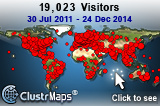HP not only offer a private/public cloud based on its amazing HP Bladesystem Matrix & VMware, but also on a Hyper-V platform as well, and its part of the Microsoft Hyper-V Cloud Fast Track program (see here for more information of the Fast Track program and how it can help accelerate your journey to the cloud).
HP’s Cloud Foundation for Hyper-V is a reference architecture that combines HP BladeSystem Matrix with Microsoft System Center to help you build the key components required for implementing a private cloud infrastructure. It also includes a step-by-step guidebook for implementing usage scenarios that take advantage of the joint value of Microsoft Hyper-V and Microsoft System Center products.
For more information see:


